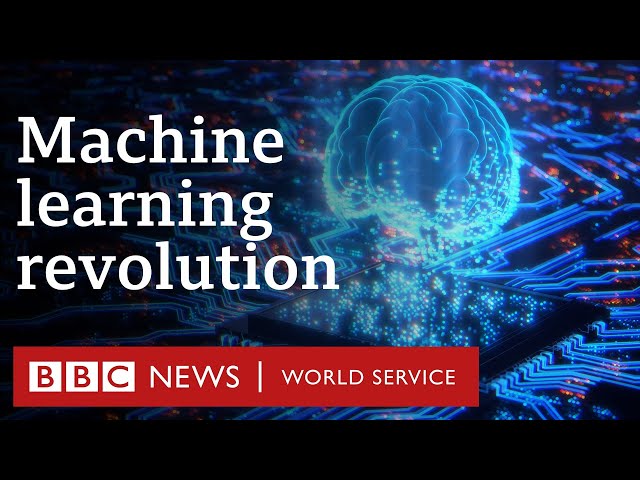Type: Article -> Category: AI What Is
What is Machine Learning?

Publish Date: Last Updated: 10th November 2025
Author: nick smith- With the help of GROK3
Machine learning (ML) is a transformative branch of artificial intelligence (AI) that enables computers to learn from data and improve their performance over time without explicit programming. By identifying patterns and making predictions or decisions, ML powers countless modern technologies, from recommendation systems to autonomous vehicles. This article explores the essence of machine learning, its history, pioneers, applications, challenges, benefits, threats, types, and its promising future.
Defining Machine Learning
At its core, machine learning involves algorithms that allow systems to analyze data, identify patterns, and make informed decisions or predictions. Unlike traditional programming, where rules are explicitly coded, ML systems infer rules from data. For example, an ML model trained on thousands of images can learn to recognize objects, such as identifying cats in new photos.
The term "machine learning" was coined by Arthur Samuel in 1959, who defined it as the "field of study that gives computers the ability to learn without being explicitly programmed." Today, ML is a cornerstone of AI, driving innovation across industries.
History of Machine Learning
The roots of machine learning trace back to the mid-20th century, intertwined with the development of computing and statistics:
-
1940s-1950s: Early concepts emerged with Alan Turing’s work on computational intelligence and the Turing Test. In 1950, Turing posed the question, “Can machines think?” laying philosophical groundwork for AI and ML.
-
1952: Arthur Samuel developed a checkers-playing program that improved its performance through self-play, marking an early milestone in ML.
-
1980s: The development of neural networks and backpropagation algorithms enabled more complex models. Geoffrey Hinton, Yann LeCun, and Yoshua Bengio pioneered advancements in neural networks, earning them the title “Godfathers of Deep Learning.”
-
1990s-2000s: Support Vector Machines (SVMs) and decision trees gained popularity. The availability of large datasets and increased computational power fueled ML’s growth.
-
2010s-Present: Deep learning, powered by massive datasets and GPUs, revolutionized ML. Breakthroughs like AlphaGo (2016) and large language models (e.g., GPT-3) showcased ML’s potential.
Key pioneers include:
-
Arthur Samuel: Introduced the term “machine learning” and early self-learning systems.
-
Frank Rosenblatt: Developed the Perceptron, an early neural network model (1958).
-
Geoffrey Hinton, Yann LeCun, Yoshua Bengio: Advanced deep learning, enabling breakthroughs in computer vision and natural language processing.
How Machine Learning is Used
Machine learning is ubiquitous, transforming industries and daily life:
-
Healthcare: ML predicts disease outbreaks, assists in diagnostics (e.g., detecting cancer in medical images), and personalizes treatment plans.
-
Finance: Fraud detection, algorithmic trading, and credit scoring rely on ML to analyze patterns and mitigate risks.
-
Retail: Recommendation systems (e.g., Netflix, Amazon) use ML to suggest products based on user behavior.
-
Transportation: Autonomous vehicles use ML for object detection, path planning, and decision-making.
-
Communication: Natural language processing (NLP) powers chatbots, virtual assistants (e.g., Siri, Alexa), and language translation.
-
Manufacturing: Predictive maintenance and quality control optimize production processes.
Types of Machine Learning
Machine learning is broadly categorized into three types, with a fourth emerging category:
-
Supervised Learning:
-
Uses labeled data (input-output pairs) to train models.
-
Examples: Classification (e.g., spam vs. non-spam emails) and regression (e.g., predicting house prices).
-
Common algorithms: Linear regression, logistic regression, SVMs, neural networks.
-
-
Unsupervised Learning:
-
Works with unlabeled data to find hidden patterns or structures.
-
Examples: Clustering (e.g., customer segmentation) and dimensionality reduction (e.g., PCA).
-
Common algorithms: K-means clustering, hierarchical clustering, autoencoders.
-
-
Reinforcement Learning:
-
Agents learn by interacting with an environment, receiving rewards or penalties for actions.
-
Examples: Game-playing AI (e.g., AlphaGo) and robotics.
-
Common algorithms: Q-learning, Deep Q-Networks (DQNs).
-
-
Semi-Supervised Learning:
-
Combines labeled and unlabeled data, useful when labeled data is scarce.
-
Examples: Text classification with limited labeled examples.
-
Benefits of Machine Learning
-
Automation: ML automates repetitive tasks, improving efficiency (e.g., sorting emails or detecting defective products).
-
Accuracy: ML models often outperform humans in specific tasks, such as image recognition or fraud detection.
-
Personalization: ML tailors experiences, from product recommendations to targeted advertising.
-
Scalability: ML systems handle massive datasets, enabling insights from big data.
-
Innovation: ML drives advancements in fields like healthcare, agriculture, and climate modeling.
Challenges of Machine Learning
Despite its promise, ML faces significant hurdles:
-
Data Quality: ML models require large, clean, and representative datasets. Biased or incomplete data can lead to inaccurate predictions.
-
Interpretability: Complex models (e.g., deep neural networks) are often “black boxes,” making it hard to understand their decisions.
-
Computational Resources: Training large models demands significant computing power and energy, raising environmental concerns.
-
Overfitting: Models may perform well on training data but fail to generalize to new data.
-
Ethical Concerns: Bias in data or algorithms can perpetuate discrimination (e.g., biased hiring algorithms).
Threats Posed by Machine Learning
-
Bias and Fairness: ML systems can amplify societal biases, leading to unfair outcomes in areas like criminal justice or hiring.
-
Privacy: ML models trained on personal data risk exposing sensitive information or enabling surveillance.
-
Job Displacement: Automation may disrupt industries, reducing demand for certain jobs.
-
Security: Adversarial attacks can manipulate ML models, such as fooling facial recognition systems.
-
Misinformation: ML-generated content (e.g., deepfakes) can spread false information.
The Future of Machine Learning
The future of ML is both exciting and transformative:
-
Generalized AI: Research aims to develop models with broader intelligence, approaching human-like reasoning (e.g., xAI’s mission to accelerate scientific discovery).
-
Federated Learning: Decentralized ML will enable privacy-preserving training across devices.
-
Explainable AI: Efforts to make models more interpretable will build trust and accountability.
-
Quantum Machine Learning: Quantum computing could exponentially speed up ML tasks.
-
Sustainability: Green AI initiatives will focus on energy-efficient algorithms to reduce environmental impact.
-
Industry Integration: ML will further permeate fields like education, agriculture, and space exploration.
Additional Considerations
-
Ethics and Regulation: Governments and organizations are developing frameworks to ensure responsible ML use, addressing bias, privacy, and accountability.
-
Interdisciplinary Impact: ML intersects with fields like neuroscience, psychology, and sociology, informing both technology and human behavior.
-
Accessibility: Open-source tools (e.g., TensorFlow, PyTorch) and cloud platforms are democratizing ML, enabling smaller organizations to innovate.
Machine Learning on YouTube

Test-Time Adaptation: the key to reasoning with DL
YouTube Channel: Machine Learning Street Talk

Machine Learning
YouTube Channel: ADP

What do tech pioneers think about the AI revolution? - BBC World Service
YouTube Channel: BBC World Service
Conclusion
Machine learning is a powerful tool reshaping the world, from its origins in the 1950s to its current role in driving AI innovation. By learning from data, ML enables automation, personalization, and breakthroughs across industries. However, challenges like bias, interpretability, and ethical concerns must be addressed to ensure its benefits outweigh its risks. As ML evolves, its integration with emerging technologies and focus on responsible development will define its impact on society. The question “What is machine learning?” is not just about technology—it’s about a paradigm shift that continues to redefine how we interact with the world.
More great What is AI Articles
AI Questions and Answers section for What is Machine Learning?
Welcome to a new feature where you can interact with our AI called Jeannie. You can ask her anything relating to this article. If this feature is available, you should see a small genie lamp above this text. Click on the lamp to start a chat or view the following questions that Jeannie has answered relating to What is Machine Learning?.
Be the first to ask our Jeannie AI a question about this article
Look for the gold latern at the bottom right of your screen and click on it to enable Jeannie AI Chat.
Type: Article -> Category: AI What Is

